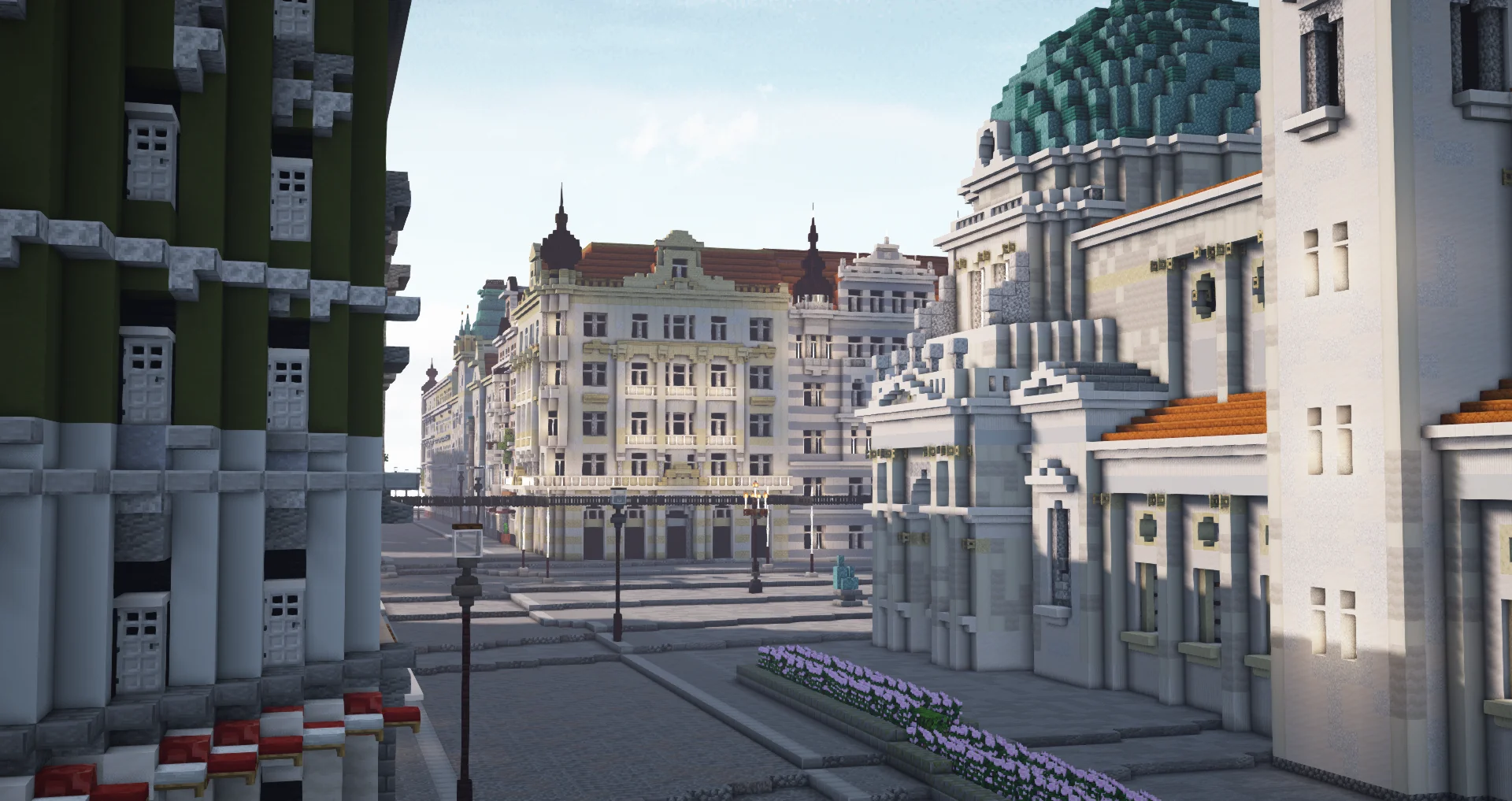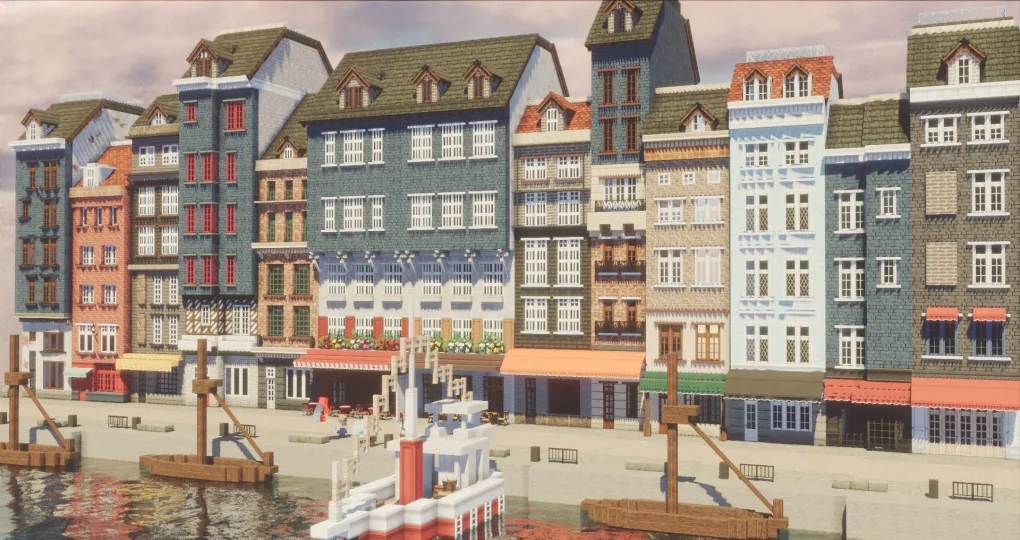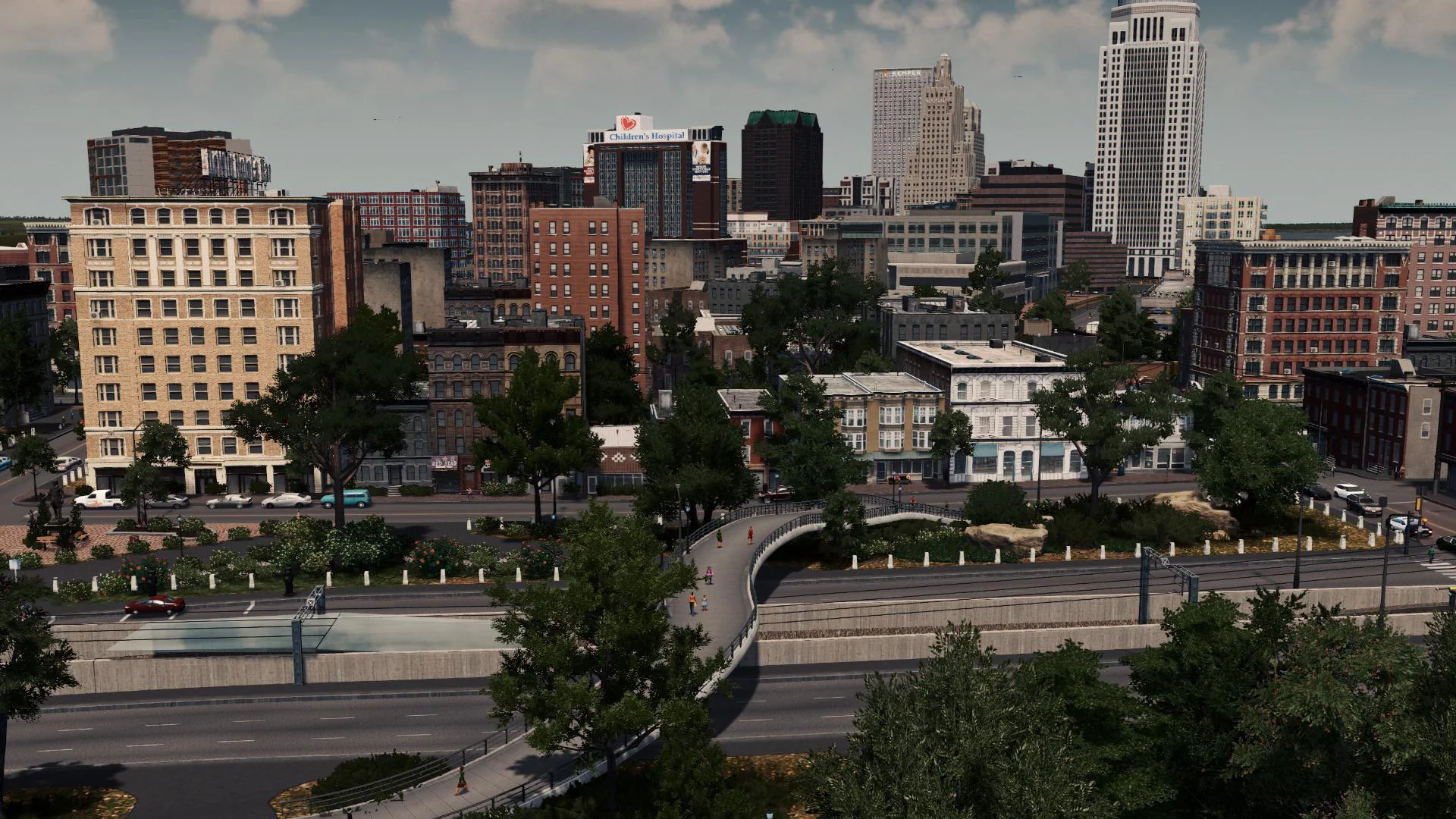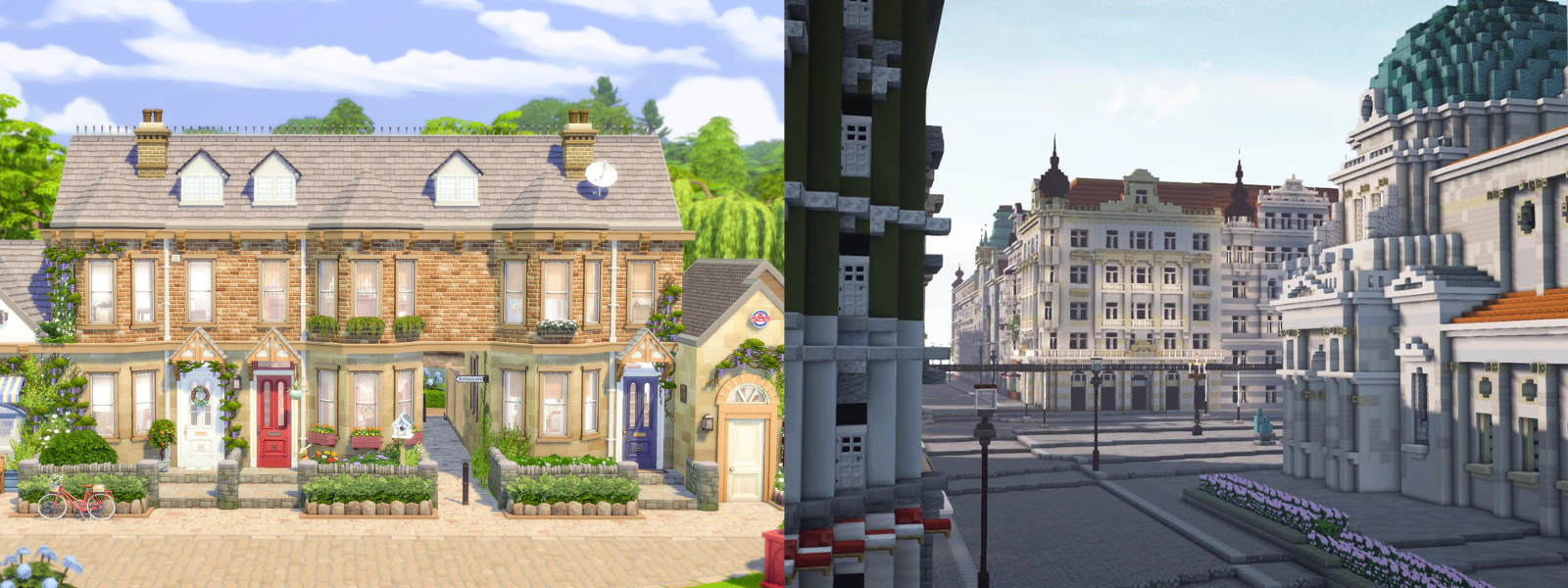Lauren Botterill asks if big changes might flow from computer games’ clicks and bits…
Video games aren’t just a fad. And they can be more than just games. But can they help us to ‘gain valuable insight into the social psychology of the historical moment’ as one writer put it?1 Many argue that they are a waste of time, with little real-world value. I play games and I disagree. I think some games have the potential to inspire the next generation of urban designers and even change the way we design new places. Here’s why.
‘The Sims 4’, like its predecessors, is classified as a ‘life simulation’ game, in which players can control the lives of multiple virtual characters. But it’s appeal is wider. Integral to the game’s popularity is the freedom players have to create buildings, insides, outsides and landscaping. As a child, I recall being enthralled with videos of other players constructing extravagant and sprawling mansions ‘in-game’. As I grew older and the franchise developed, I became more interested in the details, starting to understand the importance of window placement, roof height and designing within constraints. Watching these videos, as well as my own time playing, certainly opened my eyes to the power of (trying to) design things well. It made me look. Details started to matter.
One key feature about building in ‘The Sims 4’ is the lot you are restricted to. The typically large plot sizes provide ample opportunity to build your dream home to almost any style or scale… as long as the house you want to build is detached of course. In a game initially designed to critique US consumer culture the one dwelling per lot ironically epitomises American suburban sprawl.2 (Though some players have managed to work beyond this limitation tricking the game to let them create individual terraced houses on one lot.)
![]()
British Terrace houses built by ‘PixelNest’ on The Sims 4
According to its publisher EA, the game now exceeds 70 million players worldwide.3 This means a lot of builds. Many of these appear in the ‘Sims 4 Gallery’, an online forum where builds are shared with the community and can be downloaded into your own game.

Minecraft build via Reddit by ‘limberton’
‘Minecraft’ is the epitome of ‘sandbox’ gaming, giving players the creative freedom to alter the games environment and purpose. It is also one of the world’s most popular games with its own education edition, supporting the teaching of a variety of subjects like coding and history.4 Licensed to over 35 million students and teachers globally, the success of ‘Minecraft Education’ can be attributed to something quite simple: it’s great fun.5
At first glance, having predominately square blocks to work with may seem restricting, but the consistent block sizes help players work to a variety of scales. From a worldwide 1:1 scale ‘build the earth’ project to supersized builds and artworks, increasingly more detailed designs can be produced. Innovative players can create even more detail through modification, to improve textures, lighting, and architectural appearance. Even without ‘mods’, players have found countless ways to repurpose other in game items, with upside down stairs and doors serving new more aesthetic functions.
Cody Sumter, of the MIT media lab, said that the game’s creator ‘hasn’t just built a game. He’s tricked 40 million people into learning to use a CAD program’. Cody himself has built a program to 3D print Minecraft builds, making the creation of model files possible without complicated software.6

Gentle density using the ‘Cocricot’ mod for architecture in Minecraft

Cities Skylines build of Baltimore via Reddit by ‘Odd-Light7558’
In ‘Cities Skylines’, where and what you build has consequences on your virtual residents’ quality of life and can highlight the realities of urban planning decisions. As population increases for instance, so does vehicular traffic. However, this becomes less problematic in cities that have good public transport infrastructure introduced from the beginning. You can have zoning and use classes in game, as well as the real world. What goes where matters. Heavy industry near homes makes people sadder. Virtual citizens’ real time needs in turn influence decision making, just like real life. The satisfaction and movement patterns of these non-player characters (or ‘NPC’s’ to use the jargon) encourages players to be more flexible and to change their design. The possibilities for testing how to make sustainable and happy places in Cities Skylines is vast. The live traffic flow from virtual commuters, might even approximate a rudimentary traffic modelling system, helping players to identify problem areas and so-termed ‘desire paths’ (where people want to go). Arguably the most exciting practicality of ‘Cities Skylines’, is the ability to input terrain data, making it viable to plan around the constraints of real-world topography.
A 2008 paper entitled ‘Should planners start playing video games?’ explored two other games; ‘Sim City’ and ‘Second Life’. It discussed how these games could add value to the industry if appropriately ‘upgraded’. Fifteen years on, I think it is clear to see that some games have made great advances to fulfilling this potential. Some offer real practical value for those who aspire to plan and create real places.
These games are constantly evolving, in part due to such a large user base. Their accessibility and capacity to entertain are ultimately driving their continued development. Games like ‘The Sims 4’, ‘Minecraft’ and ‘Cities Skylines’ allow users to start to learn the fundamentals of urban planning, such as scale, movement and attractive design, all through play. The video game phenomenon, at least for these games, has demonstrated an impetus for personal and digital innovation. How can we take this further? How can we use it in practice? Perhaps in the future we will see gameplay as part of community co-design, assisting as a perspective model for vision sketches or allowing people to walk amongst 3D designs and experience a sense of enclosure and depth that can’t be achieved in a 2D plan. Bring it on.
Lauren Botterill is a graduate urban designer at Create Streets
[1] Jon Bailes, 2019, Ideology and the Virtual City.
[2] Brooker, C, 2013. ‘How Videogames Changed the World’. Channel 4. Event occurs at 67 minutes.
[3] EA, 2023. ‘The Sims™ 4 Becomes the Most Widely Played Game in the 23 Year History of the Franchise With More Than 70 Million Players Worldwide’
[4] https://education.minecraft.net/en-us
[5] Slattery, E.J, et al, 2023. ‘Primary School Students’ Experiences using Minecraft Education during a National Project-Based Initiative: An Irish Study. TechTrends.
[6] Cheshire, T, 2012. ‘Want to learn computer-aided design (CAD)? Play Minecraft’. Wired


